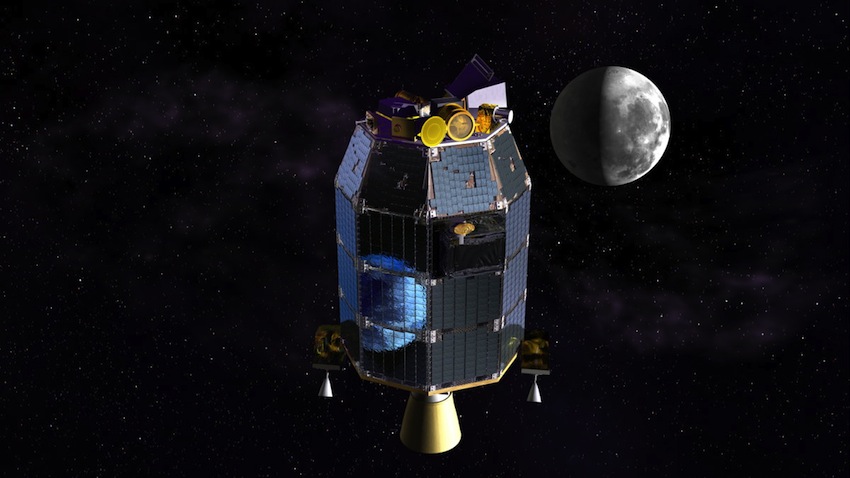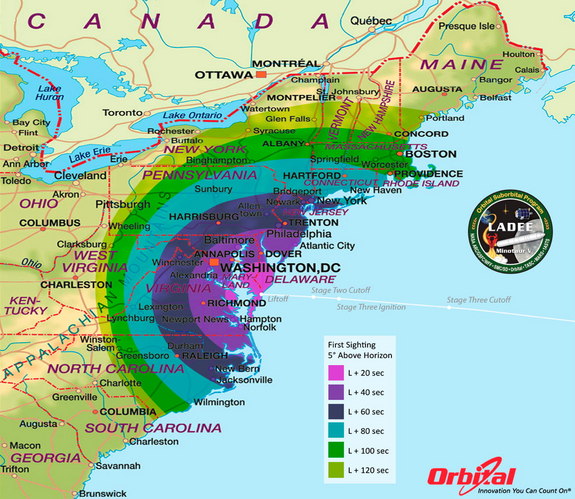Try and Spot NASA’s LADEE Spacecraft As It Gets Launched to the Moon
Scientists from the National Aeronautics and Space Administration admit that they know the moon isn’t made out of cheese, but they also don’t know much about what it is made up of, either.
To find out, on Friday, they will launch a car-sized moon-orbiter known as the Lunar Atmosphere and Dust Environment Explorer, or LADEE, into space, to collect information about the big, bright piece of rock floating far away from the Earth, in hopes of learning more about the overall lunar atmosphere.
At around 11:27 p.m., people on the East Coast—including Boston residents— could be lucky enough to catch a glimpse of the LADEE as it begins its journey into orbit from Virginia, on a rocket, according to officials from the space organization. The spacecraft, which weighs 844 pounds, will spend more than 100 days on its mission, sans-astronaut, once it gets to the moon.
According to a chart that shows the rockets planned trajectory based on its elevation visibility, people in the Boston-area should be able to spot the rocket moving through the sky around 100 seconds after the initial launch:
Space.com says the further away a person is from the launch site, the closer to the horizon the rocket will be.
The LADEE was developed and designed in one of NASA’s facilities in Silicon Valley. The purpose of the launch is to have the device orbit the moon, and provide unprecedented information about what’s going on in the solar system surrounding the Earth, and in the area above the moon’s surface.
According to NASA officials:
[It will] orbit the moon to gather detailed information about the lunar atmosphere, conditions near the surface, and environmental influences on lunar dust. A thorough understanding of these characteristics will address long-standing unknowns, and help scientists understand other planetary bodies as well.
The launch will be carried live on NASA’s website. People can also follow along and watch all the action using the hashtag #NASALADEE on Twitter.
For additional information about the specialized spacecraft, check out this chart developed by NASA scientists, or watch the video below, which outlines the mission in its entirety.




